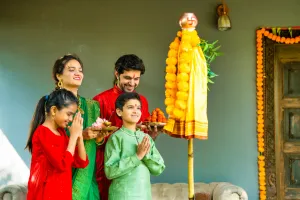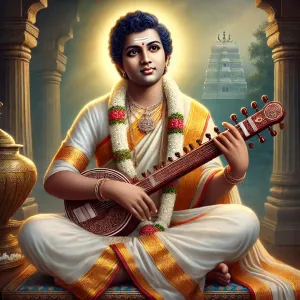Hanuman Jayanti is one of India's most auspicious and widely celebrated Hindu festivals. It marks the birth of Lord Hanuman, the mighty Vanara known for his unwavering devotion to Lord Ram, immense strength, courage, and selfless service. Worshipped as a symbol of power, energy, intelligence, and devotion, Hanuman inspires millions worldwide.
This sacred day is celebrated with great enthusiasm and reverence, especially by devotees of Shree Ram and Hanuman. The festival is not just a religious observance but a spiritual experience, reminding devotees of the values of humility, strength, and unwavering faith.
The Divine Birth of Hanuman

Hanuman Jayanti commemorates the birth of Anjaneya, another name for Hanuman, who was born to Anjan, an apsara cursed to be born on earth, and Kesari, a Vanara chief. Hanuman was believed to be born by the blessings of Vayu Deva, the Wind God, hence the name Vayuputra. He is also known as Maruti Nandan, Bajrangbali, and Mahavira, each signifying his personality's different attributes.
The story of his birth is found in various Puranas and epics. To help Lord Vishnu in his incarnation as Shree Ram, he took birth as Hanuman. Anjan performed intense tapasya to please Lord Shiv and received the boon that Shiv himself would be born as her son.
When is Hanuman Jayanti Celebrated?

Unlike many Hindu festivals that have a single fixed date, Hanuman Jayanti is observed on different dates in various parts of India, based on regional traditions and beliefs:
- North India: Celebrated on Chaitra Purnima (full moon day of the Chaitra month, March–April), which is believed to be Hanuman’s actual birthday.
- Maharashtra: Observed on the 14th day of Krishna Paksha of Chaitra month.
- Tamil Nadu and Kerala: Hanuman Jayanti is celebrated during Margazhi (December–January).
- Karnataka and Andhra Pradesh: Hanuman Jayanti is a 41-day celebration that starts on Chaitra Purnima and ends on the 10th day of Vaishakha.
- Odisha: Observed on Baisakha Shukla Dasami, during Hanuman’s Janmotsav.
Why Hanuman Jayanti is Important
Hanuman is not just a mythological character but a revered deity who embodies the highest ideals of devotion (bhakti), strength (bal), humility (vinaya), and service (seva). His life is a shining example of what it means to dedicate oneself entirely to a higher purpose.
Hanuman Jayanti is an occasion to remember his unshakable faith in Shree Ram, his unmatched valor during the Ramayan war, and his constant readiness to help those in need. It inspires people to cultivate similar virtues in their own lives—faith, courage, and loyalty.
Celebrations Across India
Hanuman Jayanti is celebrated in various ways, depending on local customs, temple traditions, and community preferences. Despite these differences, the central theme of devotion and reverence remains the same.
1. Temples and Rituals
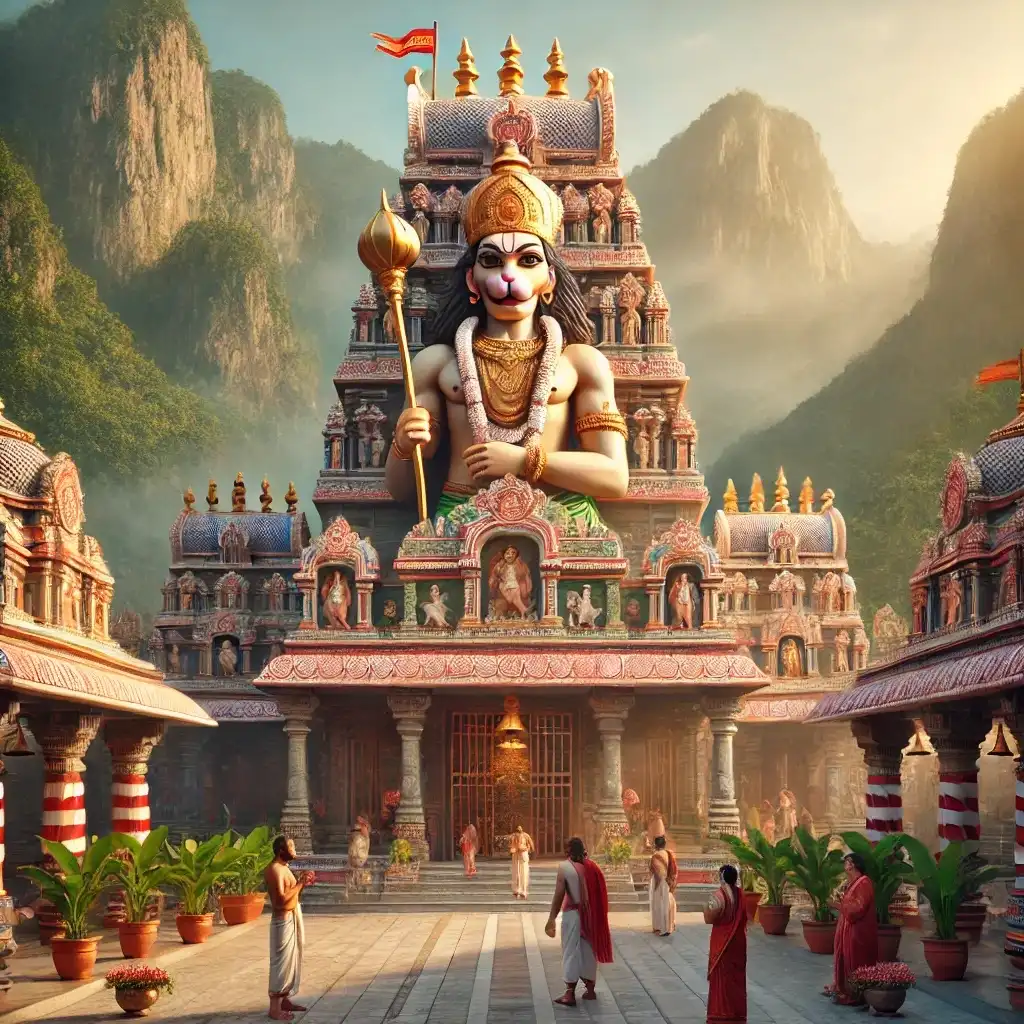
On Hanuman Jayanti, Hanuman temples are beautifully decorated with flowers, flags, and lamps. Special pujas, abhisheks (ritual bathing), and aartis are conducted. In temples like:
- Hanuman Garhi in Ayodhya
- Sankat Mochan Temple in Varanasi
- Jakhu Temple in Shimla
- Mahavir Mandir in Patna
- Namakkal Anjaneyar Temple in Tamil Nadu
Thousands of devotees gather for darshan and blessings.
Devotees offer vermilion (sindoor), oil, and laddus, which are believed to please Hanuman. Large idols are bathed in water, milk, and honey in some places before being dressed in saffron robes.
2. Chanting and Recitations

On this day, many recite the Hanuman Chalisa, a 40-verse hymn composed by Tulsidasji extolling Hanuman’s virtues and power. Some chant the Sundar Kand, the fifth book of the Ramayan, which focuses heavily on Hanuman’s adventures.
Akhand Path (uninterrupted reading) of the Ramcharitmanas or Hanuman Chalisa is held in many homes and temples. Bhajan sessions and kirtans continue throughout the day and night.
3. Fasting and Devotion
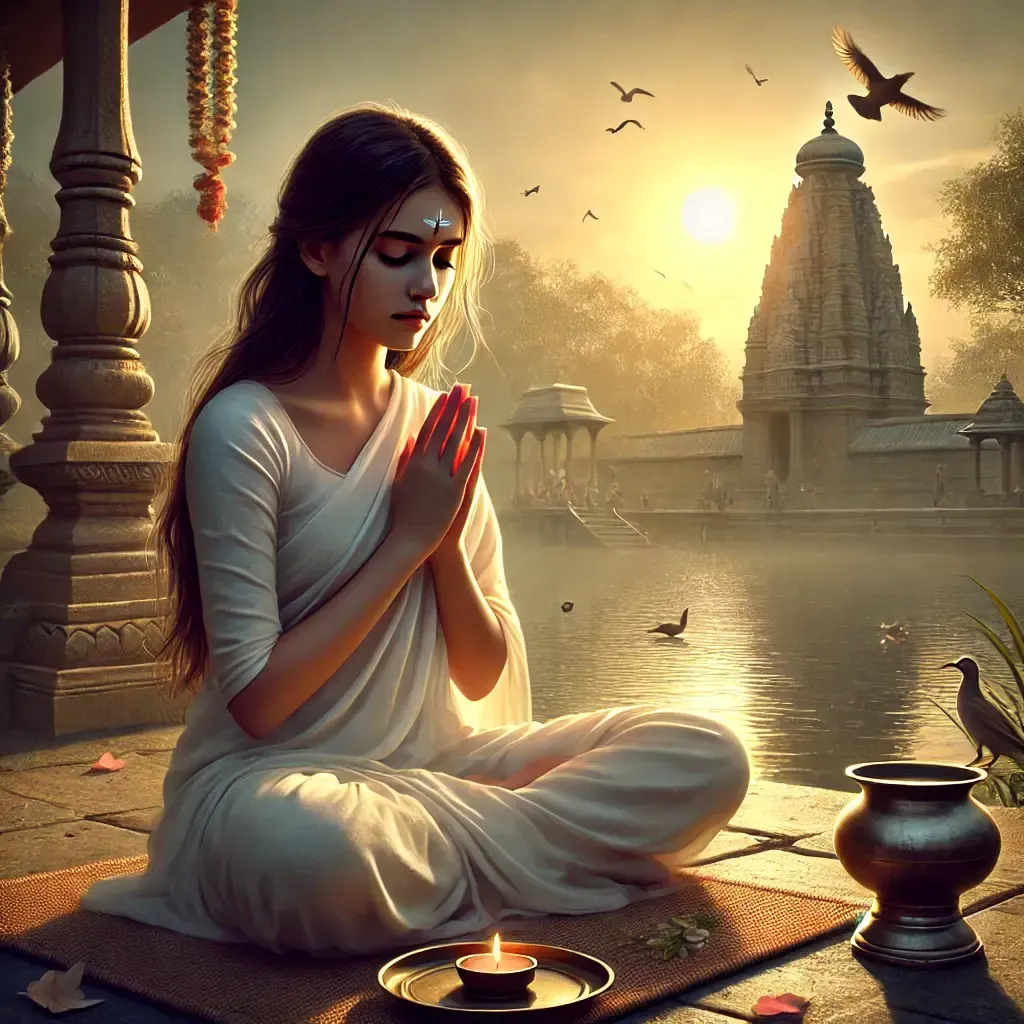
Devotees observe fasts (vrat) on Hanuman Jayanti to seek strength, remove obstacles, and gain protection. Many eat only fruits and milk throughout the day. It is believed that sincere prayers on this day can remove negativity, fears, and even black magic.
Hanuman is known as Sankat Mochan, the remover of troubles. People pray to him for courage, exam success, good health, and victory over enemies.
Regional Variations in Celebration
North India (Chaitra Purnima)
Devotees who sing bhajans and carry Hanuman flags hold large processions in Uttar Pradesh, Bihar, and Madhya Pradesh. In Delhi and Varanasi, street dramas (Ramlilas) and public recitations of Hanuman Chalisa are held daily.
Maharashtra
In cities like Mumbai and Pune, Hanuman temples are thronged by devotees from early morning. Special midnight vigils (jaagran) are held, and the temples remain open all night.
Tamil Nadu
In Tamil Nadu, Hanuman is regarded as a Brahmachari, and his temples are known for their powerful energies. The month of Margazhi is highly auspicious, and Hanuman Jayanti falls during this time. Namakkal Anjaneyar Temple sees thousands of visitors, and its 18-foot idol is revered.
Andhra Pradesh and Karnataka
Hanuman Jayanti is an extended celebration in these states that starts with Chaitra Purnima. Devotees observe 41 days of austerity, ending on the 10th day of Vaishakha. They recite the Hanuman Chalisa daily, visit temples regularly, and perform acts of charity.
Symbolism of Hanuman
Hanuman’s form is a powerful symbol:
- Mace (gada): Strength and valor.
- Mountain in hand: Readiness to serve and find solutions.
- Open heart revealing Shree Ram and Sita: Pure devotion.
- Tail wrapped around his body: Discipline and self-control.
Lessons from Hanuman’s Life
- Devotion over Ego: Hanuman’s complete surrender to Shree Ram is a lesson in humility. He saw himself as a servant, never as a doer.
- Strength in Service: Hanuman’s power was never used for self-gain but always in the service of dharm and righteousness.
- Knowledge and Wisdom: Though known for physical strength, Hanuman was also a learned scholar and a grammarian.
- Faith and Fearlessness: His journey to Lanka, leaping over the ocean, and burning down Ravan’s kingdom are metaphors for the power of faith in overcoming fear.
Modern-Day Relevance
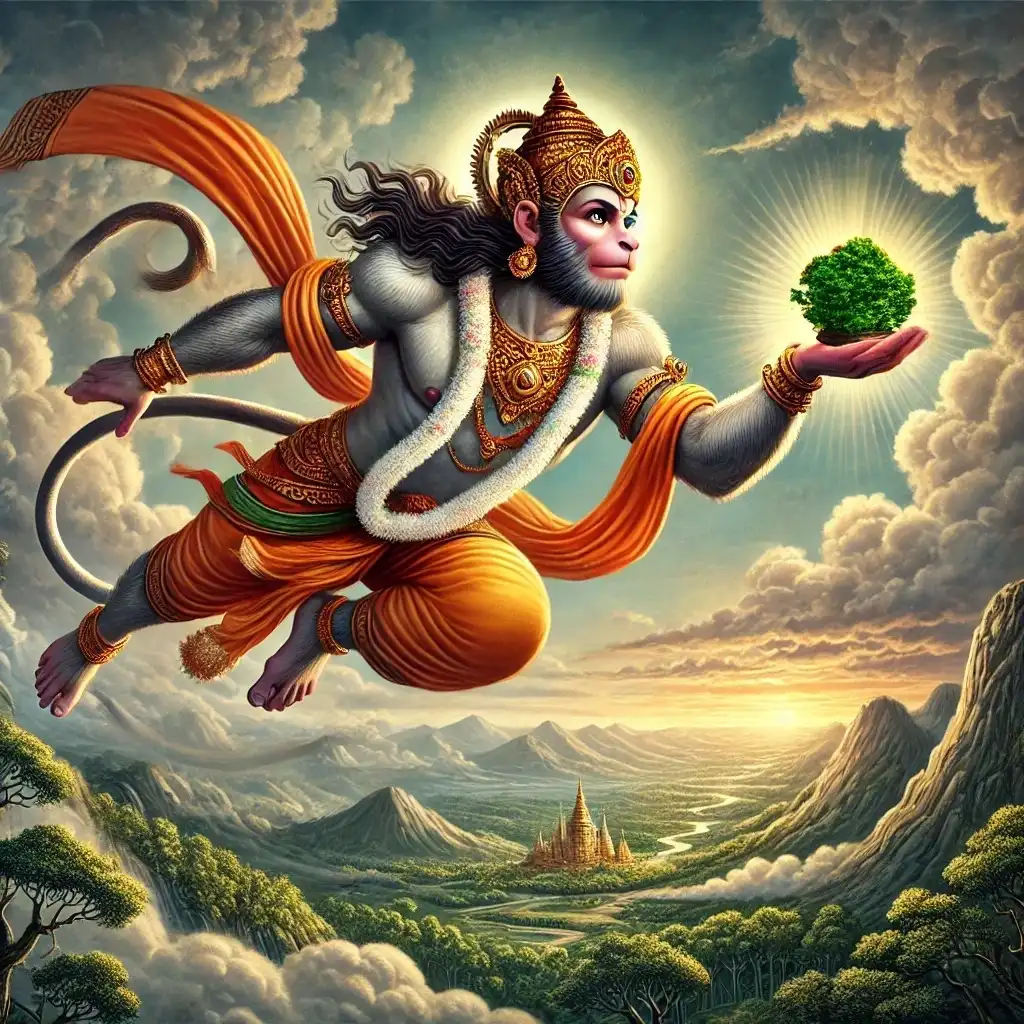
In today’s world, where people often feel stressed, insecure, and directionless, Hanuman Jayanti offers a chance to reconnect with deeper values. Devotees turn to Hanuman for:
- Mental and emotional strength
- Relief from anxiety and fear
- Success in personal and professional life
- Spiritual upliftment and protection
The image of Hanuman carrying the Sanjeevani mountain symbolizes the power of hope, persistence, and purpose—qualities we all need.
Conclusion
Hanuman Jayanti is not merely a day to celebrate the birth of a divine being but an opportunity to awaken the Hanuman within us—the fearless, humble, and devoted spirit that seeks to serve a higher truth.
Whether through fasting, singing bhajans, visiting temples, or simply meditating on Hanuman’s qualities, this day should be celebrated with the highest flames of Bhakti. As the echo of "Jai Hanuman!" fills the air, hearts are filled with strength, joy, and deep spiritual inspiration.
So, this Hanuman Jayanti, light a lamp of faith, offer a flower of devotion, and chant with all your heart:
"Bajrangbali Ki Jai!"
"Jai Shri Ram!"
Call to Action
Join the celebration at Radha Krishna Temple for Hanuman Janma Mahotsav on Saturday, April 12th, from 6 to 8:30 p.m. See the events page for details.


